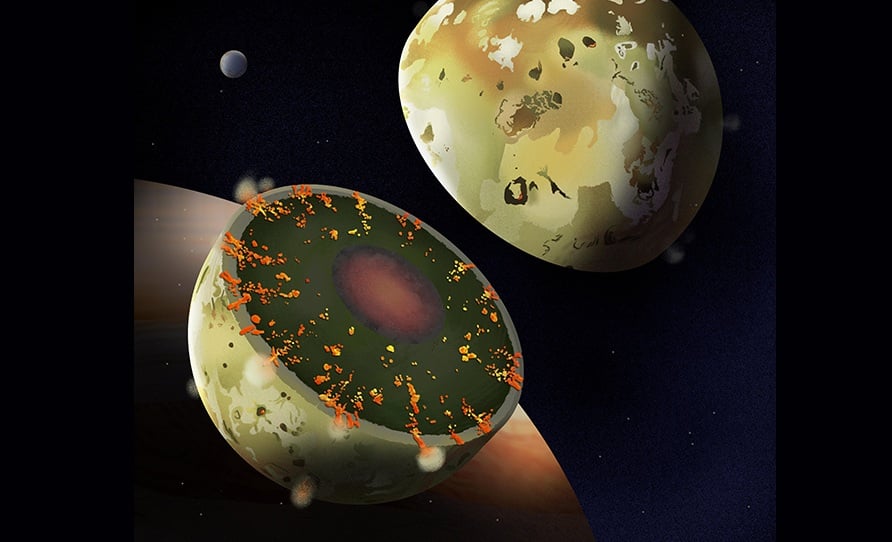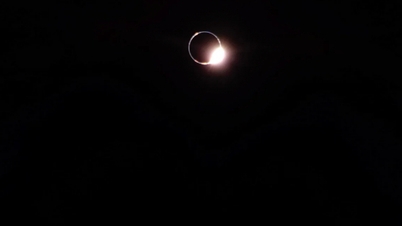(NLDO) - Data from NASA's Juno spacecraft has helped reveal the mystery of Io - the "lava hell" orbiting Jupiter.
According to Science Alert, a research team has been searching for what created Jupiter's "hell" Io. It is a large moon discovered by the scholar Galileo Galilei in the early 17th century and bears the beautiful name of a nymph in Greek mythology.
However, modern observations show that contrary to its poetic name, Io now has 400 volcanoes and vast lava flows spread across its surface.

Inside Io's "lava hell" may be small magma chambers interspersed within the crust and solid mantle - Graphic image: NASA
Previously, the widely supported hypothesis suggested that the geological chaos was caused by a global magma ocean hidden beneath the moon's surface.
This speculation is based on the fact that the early Earth itself was covered by magma oceans.
A multinational research team led by astrophysicist Scott Bolton from the Southwest Research Institute in San Antonio (USA) proves that this is a false argument.
Using images from NASA's Juno spacecraft, gravity measurements and historical data on Io's tidal deformation, Dr. Bolton and colleagues determined that Io's volcanoes are driven by the dispersal of magma chambers in the solid mantle.
Io orbits Jupiter every 42.5 hours, pushed and pulled by its massive gravity in an elliptical orbit that constantly reshapes the celestial body, creating a phenomenon known as tidal heating, generating enormous amounts of internal heat.
But new calculations show that the deformation Io has undergone is not large enough to support the idea of a global magma ocean.
The constant tidal heating generates enormous amounts of energy, which could melt part of Io's interior. If Io had a global magma ocean, its tidal deformation signature would have been much larger.
So they believe that Io's interior is mostly solid. Magma chambers are enough to create the "hell" above when combined with external impacts.
In addition to telling us more about the Solar System's most terrifying "hell," the research also gives scientists useful information about how tidal heating can affect a celestial body from the inside.
"This has implications for our understanding of other moons, such as Enceladus and Europa, and even exoplanets and super-Earths," said co-author Ryan Park from NASA's Jet Propulsion Laboratory (JPL).
The study was recently published in the scientific journal Nature.
Source: https://nld.com.vn/phat-hien-thu-tao-ra-dia-nguc-khung-khiep-nhat-thai-duong-he-196241218105838375.htm





![[Photo] Ready for the top competitions of Vietnamese table tennis](https://vphoto.vietnam.vn/thumb/1200x675/vietnam/resource/IMAGE/2025/5/18/9c547c497c5a4ade8f98c8e7d44f5a41)
![[Photo] Many young people patiently lined up under the hot sun to receive a special supplement from Nhan Dan Newspaper.](https://vphoto.vietnam.vn/thumb/1200x675/vietnam/resource/IMAGE/2025/5/18/6f19d322f9364f0ebb6fbfe9377842d3)
![[Photo] Party and State leaders attend the special art program "You are Ho Chi Minh"](https://vphoto.vietnam.vn/thumb/1200x675/vietnam/resource/IMAGE/2025/5/18/6895913f94fd4c51aa4564ab14c3f250)




























































































Comment (0)